Which Window for Your World?
http://decor-ideas.org 08/17/2013 20:10 Decor Ideas
Whether you plan on building a new home, renovating an existing house or simply replacing some windows, you'll be confronted with a maze of window choices and options. From all the choices for location, size, type, style, function, operation, material, finish, hardware and assembly, you could very well feel like you've fallen down a rabbit hole.
So here's a look at some of the options you have, especially with regard for function and operation.
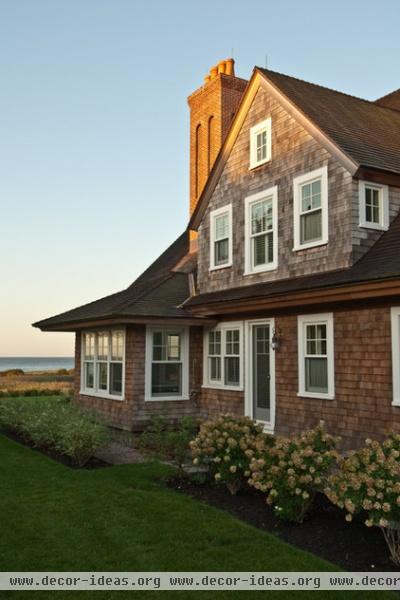
Double- and single-hung windows
The double-hung window, along with its cousin the single-hung window, is just about the most common window there is. As its name implies, the window is made of two independent sashes that are hung in a frame. The sashes, one at the bottom and one at the top, can slide up and down within this frame or, as in the case of a single-hung window, only one sash will be movable.
When to use them. This type of window is ideal for a more traditionally styled home. The individual nature and vertical proportions of this window work well in a design that uses traditional roof forms such as the gable and windows that are located one by one rather than set continuously.
In addition to their traditional appeal, a double-hung window's most distinctive visual quality is that the two sashes separate. The staggered sash will allow the window to operate with one sash sliding past the other. Another aspect of a double-hung window is the screen location on the exterior face. While not having a prominent screen on the inside is nice, having a screen on the outside effectively hides the window design, especially when full screens are used.
Cost. The cost of a double-hung window can vary from less than $200 to north of $1,000 depending on features, size and materials. The lower-cost windows are likely to be constructed with vinyl sash and frames while the more expensive windows will likely be constructed of mahogany or another exotic wood and will have individual divided lites and more.
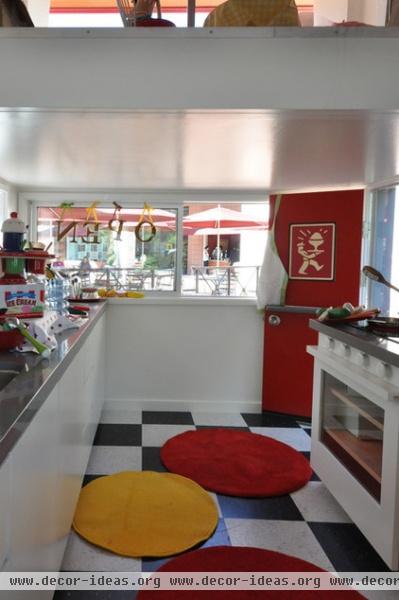
Sliding windows
The sliding or gliding window functions much like a double-hung window. The big difference is that the sash will slide horizontally rather than vertically. It's as if a double-hung is placed on its side.
When to use them. Because a sliding or gliding window typically has a distinctly horizontal proportion, these windows are good for ranch homes and other designs that stress horizontality. Certainly, this type of window is ideal for a location that has horizontal proportions already and you where want to maximize the amount of glass for light and view.
As with a double-hung window, the sashes in a slider/glider are staggered, with one sliding past the other. The result is a window that has two distinctive operating parts, each in a different plane. So this window wouldn't be an option for a design where a solid and uniform single sheet of glass is wanted.
Cost. The materials and costs range much as with a double hung window. The lower costs would be for a slider/glider made with a vinyl frame and sash and some basic glazing.
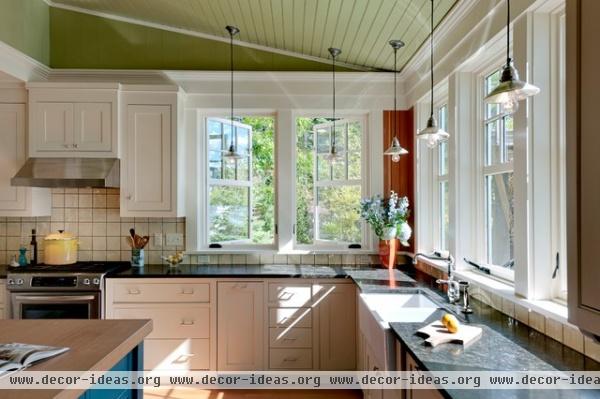
Casement windows
A casement window is a very common window type and can be found in designs from traditional to contemporary. The window is a single sash that's attached to a frame on one side. Hinges, or a hinge, is used to make the attachment, allowing the window to swing exactly like a door. But a casement window invariably only swings out. This makes it important to place a casement window away from traffic. No one wants to be banged in the head by an open casement window when taking groceries into the kitchen.
When to use them. Because the casement window is one sash, casement windows can be grouped together so that all of the panes of glass are in one plane. This gives a cleaner and more contemporary look to these windows, even when styled with traditional trim and pane patterns.
Other important visual aspects of casement windows include the screen location on the inside and the hardware. Because the screen is on the inside, it becomes a visually important element when looking through the windows from inside the house.
If looking through the screens all of the time bothers you, investing in screening material that visually disappears or a retractable screen system would be worthwhile. As for hardware, you'll have to select style and finish. The crank will be a visually significant element. If seeing this bothers you, you'll want to opt for a folding crank that's finished to match the interior finish as appropriate.
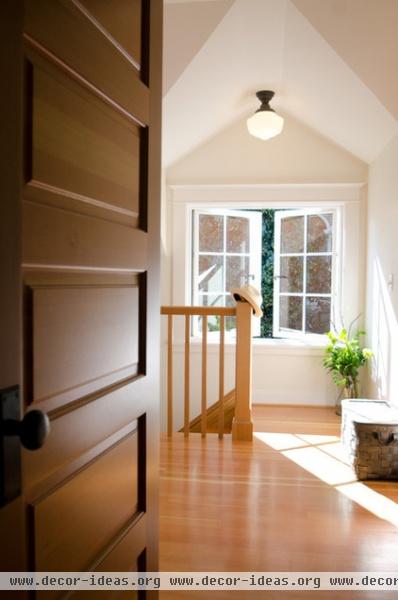
A variant of the standard casement window is the French casement. This window provides a large opening with no vertical element to split the opening when the window is open. A French casement allows the design to have a visually consistent casement size throughout the project while also ensuring that the window opening meets the minimum standards of the building code.
Cost. Expect to pay more for a casement when compared to a double-hung. This is because of the mechanical operation and subsequent hardware requirements. Of course, the tighter seal caused by the mechanical operation will make a casement window more energy efficient than a double hung or slider/glider. And, while some will argue this point, a casement window with a multi-point locking system will generally be harder to break through, making the house more secure.
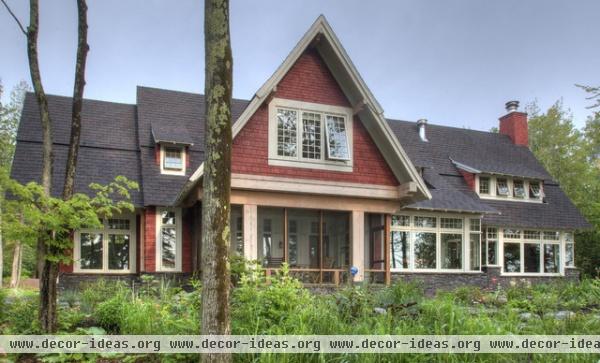
Awning windows
An awning window is much like a casement window in that it's mechanically operated with a crank. Unlike the side-hinged casement, an awning window is hinged at the top so that the sash pivots in lieu of swinging.
When to use them. An awning window shares many of the design considerations of a casement: The style is suited to both traditional and contemporary designs, the sash and glass are all in one plane, the screen is located at the interior and the hardware is an important design element. Unlike the casement, though, an awning window can be open when it's raining. Because an awning pivots up and out, the sash effectively creates a mini awning that prevents the rain from coming through the window opening.
However, unless quite large, an awning window will be a problem when certain building code requirements are factored. So check with an architect before using an awning in a room where windows must have clear opening minimums.
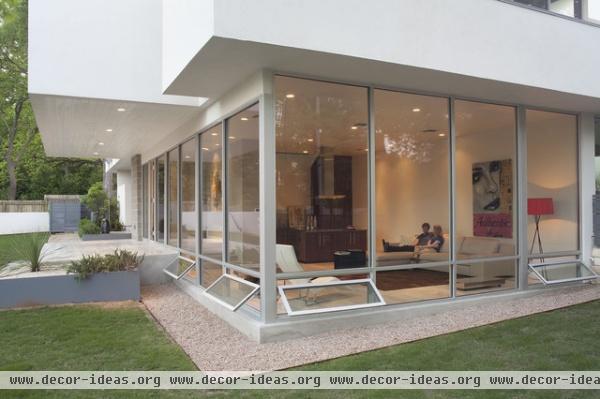
Awning windows are a favorite of architects and designers trying to achieve a wall of large glass sheets with a minimum frame and where fresh air venting is desired or required. A classically contemporary setup is the large fixed glass panel set above an awning window that is kept low in the wall. This setup allows for expansive, unobstructed views to the outside while making sure that it's possible to get fresh air into the room.
Cost. Awning windows will be much the same price point as casement windows. Depending on size, features and materials, expect to pay about $300 to $500 for an awning window.
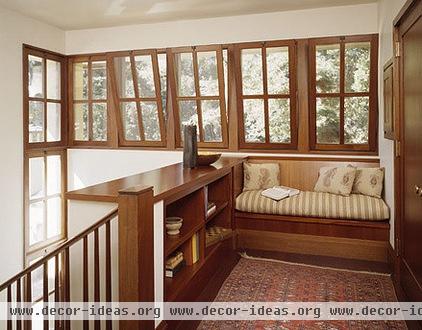
A hopper window is much like an awning window except that the bottom of the sash is hinged to the frame so the top tilts in. While the traditional hopper would only function this way, titling in from the top, today most hopper windows are made as tilt-and-turn windows.
This window will either tilt in at the top (being hinged at the bottom) or swing in (hinged along one side). A lever is used to engage or disengage the hinging system so that either the window tilts in at the top, as a hopper, or swings in from the side, as an inswing casement.
These windows are an excellent choice where there's a desire for an easy-to-clean window that can meet building code requirements and just be open a slight bit when some fresh air is desired. Some extra care will have to be taken when designing a room due to the swing feature. Furniture, lamps, etc. will all have to be placed so the windows can be easily opened and closed.
Cost. It wasn't long ago that most tilt-and-turn windows were imported, as these windows have long been common in continental Europe. In the past few years, many domestic manufacturers have been making these windows. Just keep in mind that the extra mechanical pieces and dual operation will typically make these the priciest of made-to-order windows.
More: Look to the Sun for More of Your Home's Lighting
Related Articles Recommended












